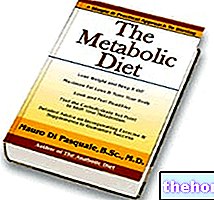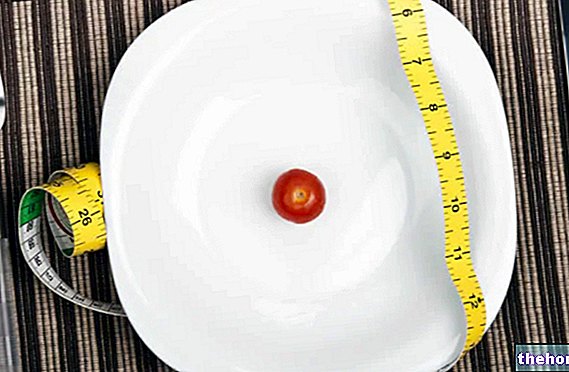Edited by Dr. Davide Marciano
Premise
Before talking about the metabolic diet, it is better to clarify that any reduction below 50-70% of the daily caloric quota coming from carbohydrates is strongly criticized by the specialized medical environment, as it is believed to cause liver and kidney overload in healthy and severe metabolic imbalances in patients suffering from particular diseases, such as diabetes, liver and kidney diseases.
What is the metabolic diet?

To better understand what I will say later it is better to pause for a moment on the meaning of ketosis and ketone bodies.
The latter are formed by "splitting" of fatty acids in lack of available sugars and, if in excess, can lead to a decrease in blood pH (ketoacidosis).
In a nutshell, depriving the body of carbohydrates forces it to draw energy from the reserve fat. This leads to the breakdown of triglycerides stored in fat cells, releasing the individual fatty acids that compose them. These, if metabolized during a phase of strong glucose depletion, lead to the formation of ketone bodies.
In fact, the purpose of ketogenicity is precisely to stimulate ketosis.
Critical issues
Advocates of this nutritional approach argue that food manipulation is unlikely to lead to ketoacidosis as dangerous as that seen in diabetics, because the body retains its ability to secrete insulin.
Another criticism against hypoglucide diets is the decline in performance due to a depletion of hepatic and muscle glycogen reserves. Recent studies have, however, shown that people accustomed to this diet are able to draw more energy from the reserves of body fat, reducing the use of glycogen and developing performances equal to or superior to those who follow the classic hyperglucidic diets.
This also happens in our daily life. If we decrease the carbohydrates introduced with the diet, the body will draw energy both from the fats of the food and from the fat, saving the low levels of glycogen and muscle amino acids.
On the other hand, if we reduce carbohydrates too much, both hepatic and muscle glycogen will be in a state of constant depletion; while managing to fulfill the biological vicissitudes, the body will therefore remain devoid of the energy necessary to sustain "optimal physical activity. Furthermore, the resulting state of ketosis is certainly not a favorable situation, as it indicates a significant reduction in muscle mass and strength.
The solution, as Dr. Mauro Di Pasquale says, consists in finding that quantity of carbohydrates with which our body works with maximum efficiency.
That is, we must take a quantity of carbohydrates (the amount depends on the individual) which still allows us to use fat as an energy source, but which also allows us to train as we have always done.
Before Starting the Diet
Before starting the diet, it is a good idea to perform some blood tests:
1) Cholesterol levels (total, HDL, LDL)
2) TSH (a test for thyroid function)
3) Fasting blood sugar
4) Blood potassium
5) Liver function tests
These tests should be repeated every time a new diet is approached.
Starting the Diet
We can start the metabolic in two different ways:
- Starting with a certain amount of carbohydrates and gradually decreasing it until we reach that point of maximum efficiency.
- Start by consuming very few carbohydrates and then gradually increasing them.
I noticed that all the people who followed the Metabolic diet have obtained excellent results following this last method which, among other things, is also the favorite of Dr. Di Pasquale.
For these reasons I will only deal with the evaluation phase which starts from a low carbohydrate content.
Evaluation phase
This phase consists in evaluating the efficiency of the organism in metabolizing fats.
You must maintain a high percentage of fat and protein in the diet, which, for the first 12 days, ie from Monday to Friday of the following week, must be low in carbohydrates.
This period is necessary to convert your body from a "carbohydrate burning machine" to a "fat burning machine". This will let you know whether or not you are suitable for a very low carbohydrate diet.
However, do not worry, even if you find it difficult, things will settle down when, in the second phase of evaluation, the carbohydrate quota is slightly increased.
However, this does not mean that other people, thanks to their high ability to oxidize fats, may have no problem following a diet so low in carbohydrates.
During these first 12 days you must best respect the following percentages:
- 50 - 60% fat
- 30 - 40% protein
- 30 g of carbohydrates
Charging phase
On the second Saturday and the following Saturdays, you have to switch to a "carbohydrate-rich" diet for 12-48 hours.
The recharge must be carried out as follows:
- 25 - 40% fat
- 15 - 30% protein
- 35 - 55% carbohydrates
In these 2 days of high carbohydrate intake the insulin will rise enormously and your muscles will fill with glycogen, firming up. In fact, studies have shown that a hypoglucide / hyperlipidic diet makes the insulin response much higher than a hyperglucide diet.
At this stage your body weight could increase significantly, but don't worry, this is all due to the filling of glycogen stores and the consequent water retention (each gram of carbohydrates carries around three grams of water).
You can afford on the weekend all the foods you gave up during the week, such as pizza, beer, etc. I recommend that you be careful these two days, as some people tend to accumulate fat faster than others. This is why we indicate a recharging period that can range from 12 to 48 hours. For some, it can even drop below 12 hours. To find out, you must learn to interpret the signals your body is sending you.
Some advices
If you are having difficulty following the metabolic diet, proceed step by step. The first time you try to recharge for only 12 hours, recording the sensations and the degree of fitness you have reached the following week. If all goes well on the second weekend, switch to a 20-hour recharge and so on, until you find the number of hours and the amount of carbohydrates that suits you best.
In this regard, I remember a very important phrase "PATIENCE AND" THE VIRTU "OF THE STRONG".
Dr. Di pasquale argues that the method for evaluating the effectiveness or otherwise of the diet consists in making changes every two weeks.
In fact, if after the first evaluation phase (12 days) you feel good you can continue with the usual 30 g of carbohydrates per day for 5 days and with the recharge at the weekend. Conversely, if you feel tired and exhausted, check that the problem does not depend on potassium or other mineral salts; if this is not enough try to slightly increase the carbohydrate quota.
To try to clarify the ideas, follow this scheme:

Do not be under any illusions, this is a diet and, like all diets, the first few days will be the hardest and most difficult; however, once they are overcome, things will be much easier. Remember that most diets fail because everyone wants immediate results without much effort. In the case of the Metabolica it is the first two weeks that require the greatest sacrifices.
You need to have a lot of determination and PATIENCE!
- Any carbohydrate increases you make must be really necessary.
- Do not change your normal calorie intake when starting the diet.
- Some people will experience poor stool consistency. To solve this problem, just take a good amount of vegetables or a fiber supplement.
- Only when you have adapted to the metabolic diet and have found your carbohydrate set-point do you begin to control calories, increasing or decreasing them.
Continued: Metabolic Diet Example




























